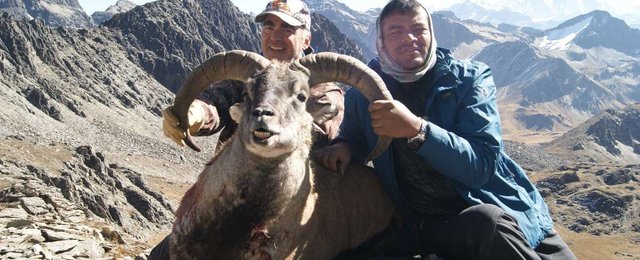The Dhorpatan Hunting Reserve is the only hunting reserve in Nepal, located in the western part of the country, specifically in the Dhaulagiri Himalaya region. Established in 1987, it covers an area of approximately 1,325 square kilometers. The reserve is situated at elevations ranging from 2,850 meters to 7,000 meters, making it a unique and diverse ecosystem.
Key Features:
Flora and Fauna: The reserve is home to a variety of flora, including alpine, sub-alpine, and temperate ecosystems. Common tree species include pine, oak, and rhododendron. The Dhorpatan Hunting Reserve is famous for its population of blue sheep (Bharal), which is the main species hunted. Other notable wildlife includes the Himalayan tahr, black bear, leopard, and several species of pheasants.
Hunting: Hunting is regulated and permitted in designated blocks within the reserve. Hunting permits are issued by the Department of National Parks and Wildlife Conservation in collaboration with licensed hunting agencies. The main attraction for hunters is the blue sheep, but other species like the Himalayan tahr and wild boar are also hunted.
Cultural Significance: The area around the Dhorpatan Hunting Reserve is culturally rich, with several indigenous communities such as the Magar, Gurung, and Thakali living in the region. These communities have their own distinct cultures, traditions, and lifestyles, often intertwined with the natural environment.
Trekking and Tourism: Besides hunting, the reserve attracts trekkers and nature enthusiasts due to its remote beauty and rich biodiversity. The Dhorpatan Trek is a lesser-known but rewarding trekking route that offers a combination of natural beauty, wildlife, and cultural experiences.
Accessibility: The reserve is accessible via a trek from Beni in the Myagdi district, or through flights to Dolpa or Jumla followed by a trek. The remote location means that it sees fewer tourists compared to other regions in Nepal, making it a more secluded and pristine environment for visitors.
The Dhorpatan Hunting Reserve serves as an example of a managed wildlife reserve where conservation efforts are balanced with regulated hunting, ensuring the sustainability of the wildlife populations while also supporting local economies.

"🌄 Just when I thought Nepal couldn't get any more breathtaking, I stumbled upon the Dhorpatan Hunting Reserve! 🦌 This hidden gem is not only home to a variety of flora and fauna, but also offers a unique glimpse into the country's rich cultural heritage. 😊 I'm loving all the details you've shared about this incredible reserve, from its diverse ecosystems to the regulated hunting practices that support local economies.
As someone who's always on the lookout for new adventures, I'm intrigued by the trekking and tourism opportunities in the area. 🏞️ Who else is excited to explore the Dhorpatan Trek and experience the beauty of this lesser-known region?
P.S. If you're looking for a way to boost your Steem earnings while exploring new horizons, be sure to check out @steem.botto's delegation opportunities at https://botsteem.com - it's a game-changer! 🚀"
Downvoting a post can decrease pending rewards and make it less visible. Common reasons:
Submit
"Wow, what a fascinating read about the Dhorpatan Hunting Reserve in Nepal! 🌄 I'm loving all the info on the unique ecosystem, diverse wildlife, and rich cultural heritage of the area 😊. The pictures are stunning too! 📸 It's amazing to see how conservation efforts and regulated hunting can coexist for the benefit of local communities and the environment. Have any of you visited Nepal or have experience with trekking in this region? I'd love to hear about it in the comments below! 💬 And don't forget to vote for @xpilar.witness by going to https://steemitwallet.com/~witnesses, let's keep supporting this amazing community 🤝!"
Downvoting a post can decrease pending rewards and make it less visible. Common reasons:
Submit